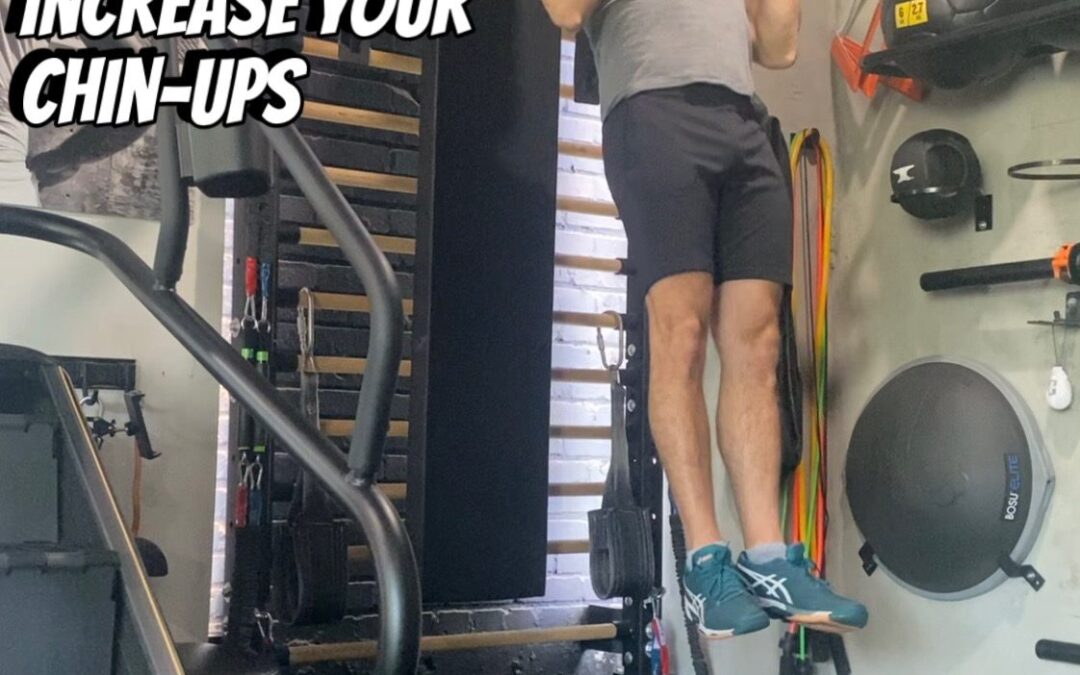Finding a way to increase your chin-ups, along with all other upper body bodyweight movements, are usually seen as the hardest to progress. The muscle responsible for chin-ups include the lats, rhomboids, trapezius group, posterior deltoids, and biceps along with some contribution to spinal stabilizers. After you achieve your first few repetitions, you will need to employ advanced methods to increase your chin-ups and luckily I have three advanced methods to increase your chin-ups.
Increasing Your Chin-Ups
Cluster Sets
The first way you can increase your chin-ups is to perform cluster sets. In a nutshell: let’s say you can only do ten straight repetitions and cannot seem to increase your chin-ups. What you want to do is increase the total volume that you accomplish in that workout, in that one session, by breaking it down. Aim for getting 4 reps 5 reps at a time and you’ll have a few repetitions left in reserve (RIR). After you’re five, you’re going to go ahead and rest for maybe about 20 seconds 30 seconds, but then go right back up again and repeat the process for three to four clusters.
Benefits to improving your chin-ups through cluster sets include:
- Perform your repetitions without the mitigating technique and without reducing the speed of your repetitions.
- You’ll save that stored glycogen and potentially double or triple your total volume of repetitions you can perform in a session.
- You’ll know when fatigue is onset with the reduction of speed within a repetition.
Myostatic Repetitions
Another method to increase your chin-ups is called myostatin repetitions. You’ll go through a full repetition, go down all the way, but then go only a quarter up: hold that for a brief second, then relax, drop to the bottom, and then pull yourself back up. With the myostatic repetition, we’re playing with that stretch short cycle and the golgi tendon organ (GTO). This method has been used before in bodybuilding environments to great success with how the nervous system plays with stored energy and muscle action.
Benefits with the myostatic repetition to increase your chin-ups:
- Increase mental toughness.
- Works on strengthening through the “sticking point.”
Just Add Weight
The third way to increase your chin-ups is simply just adding weight. The chin-up is a strength based-movement and we want to get stronger with lower reps. Don’t just think you always got to max out until you pass out as the only way to increase your chin-ups. You can increase your total number of bodyweight chin-ups by increasing one’s max strength.
Using a weight belt for chin-ups or dips where you can wrap either a weight plate or kettlebell around is the best option. If you don’t have access to a weight belt, a harder option may be to pina dumbbell between your legs to increase your chin-ups through additional resistance. Focus on strength-based repetition schemes of 3-6 repetitions and using a weight that doesn’t compromise form too much.
Benefits of using additional resistance to increase your chin-ups:
- Increases maximal strength of muscles recruited during the chin-up.
- Reduces the effort level of the first initial bodyweight repetitions.
- Stimulates great hypertrophy in your back and biceps.
Training your back musculature and finding advance methods to increasing your chin-ups holds a lot of benefits that transfer over to sport-specific improvements for overhead athletes, runners looking to improve their body composition and performance, and for those looking for upper body movements to improve their lower body pulling strength. As with any pursuit in strength & conditioning and fitness, always look towards your nutrition, recovery, and supplementation as other areas to critique when trying to increase your chin-ups. After phasing these methods, my clients have seen dramatic improvements to their performance and their physical appearance.

